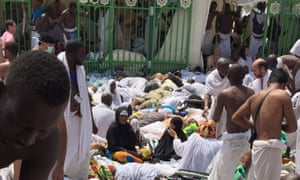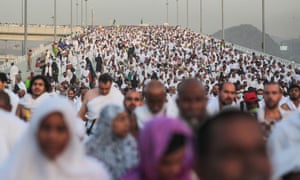Defender of the Faith
"In March of this year, Sweden's Foreign Minister, Margot Wallstrom, spoke out against Saudi Arabia's brutalizing repression of 50% of its population: women. She also objected to the Saudi regime's sentencing of blogger Raif Badawi to a thousand lashes for the crime of writing a mild blog regarding the wish for a bit more speech. The sentence was, said Wallstrom, "medieval" and a "cruel attempt to silence modern forms of expression."
"The Saudi propaganda regime promptly attacked the Swedish minister for "unacceptable interference in the internal affairs of Saudi Arabia." The Saudi propaganda machine has had to issue similar statements quite a lot as of late, most recently when worldwide attention finally focused in the past few weeks on the case of Ali Mohammed Al-Nimr, arrested at the age of seventeen, who has been sentenced to beheading and crucifixion. The international uproar that this unspeakable sentence has finally triggered suggests that the House of Saud may --in the media Information Age -- not only have overstretched itself, but come to the end of a road."
"This past week, another two Saudi human rights activists -- Abdelrahman Al-Hamid and Abdelaziz Al-Sinedi -- were sentenced to jail for, among other similar charges, illegally establishing a human rights organization, questioning the credibility and objectivity of the judiciary, interfering with the Saudi Human Rights Commission (one can imagine what that is like), and describing Saudi Arabia as a police state."
Douglas Murray, Gatestone Institute
 |
| Millions of people travel to Mecca every year to take part in the celebrations-- Reuters |
A tremendous amount of construction is ongoing around those sacred sites, with up to a dozen giant cranes surrounding the Grand Mosque in Mecca. And when one of those cranes fell in early September -- according to Saudi authorities, as a result of strong winds -- over a hundred worshippers were killed, and the mosque heavily damaged. A dreadful outcome resulting from questionable activity around a heritage-vulnerable area; which leads to the question, if the site is sacred, why is it being commercially profaned?
And then there is the catastrophic stampede that took place during the hajj in Saudi Arabia last month where, according to a new Associated Press tally, at least 2,121 pilgrims died when two immense crowds encountered one another going in opposite directions in an area leading to the Kaaba at the Al-Masjid al-Haram site, inadequate to accommodate such large gatherings, and panic ensued. In the crush, people clambered over one another, crushing others to death in enormous numbers.
Authorities in Saudi Arabia really prefer to discuss the situation in private. The tragedy that took place at Mina, outside Mecca, sees the official Saudi toll number at 769 people killed and 934 injured. The very same figures that emerged two days after the September 24 calamity. If there appears to be a discrepancy between the Saudi official figures and those arrived at by the various countries accounting for their dead, it has yet to be officially addressed.
The identification of bodies is still ongoing by the various countries whose nationals made their obligatory pilgrimage to Mecca. And work is still commencing on determining the whereabouts and outcomes of hundreds of pilgrims who remain missing. The official Saudi Press Agency is mute on any official response to the steadily rising death toll. Evidently Crown Prince Mohammed bin Naif bin Abdul Aziz, the kingdom's interior minister, reached no consensus of opinion when he convened a meeting on the matter.
 |
| People gather around the victims of the stampede in Mina. Photograph: AP |
Now that it has been definitely determined that the tragedy represents the deadliest loss of life in the history of the annual pilgrimage, no word has come from Saudi King Salman, who holds the title of "Custodian of the Two Holy Mosques". His Eminence evidently sees no reason to defend his title, one which, through his personal supervision of the hajj is his country's source of the greatest prestige in the Muslim world.
The Islamic Republic of Iran, flexing its own influence and perceived respect in the Shiite divide of the Muslim world, recommends that an independent body take the responsibility of planning and administering the five-day hajj pilgrimage. Iran has taken great pleasure in contesting its rival Middle East power, accusing it of mismanagement and concealing the real numbers involved in the deaths. Exceeding 4,700, claims Tehran; no evidence required.
 |
| Hundreds of thousands of pilgrims in Mina make their way to perform a ritual at the Jamarat bridge, the last rite of the annual hajj. Photograph: Mosa'ab Elshamy/AP |
Labels: Catastrophe, Heritage, Islam, Saudi Arabia

<< Home